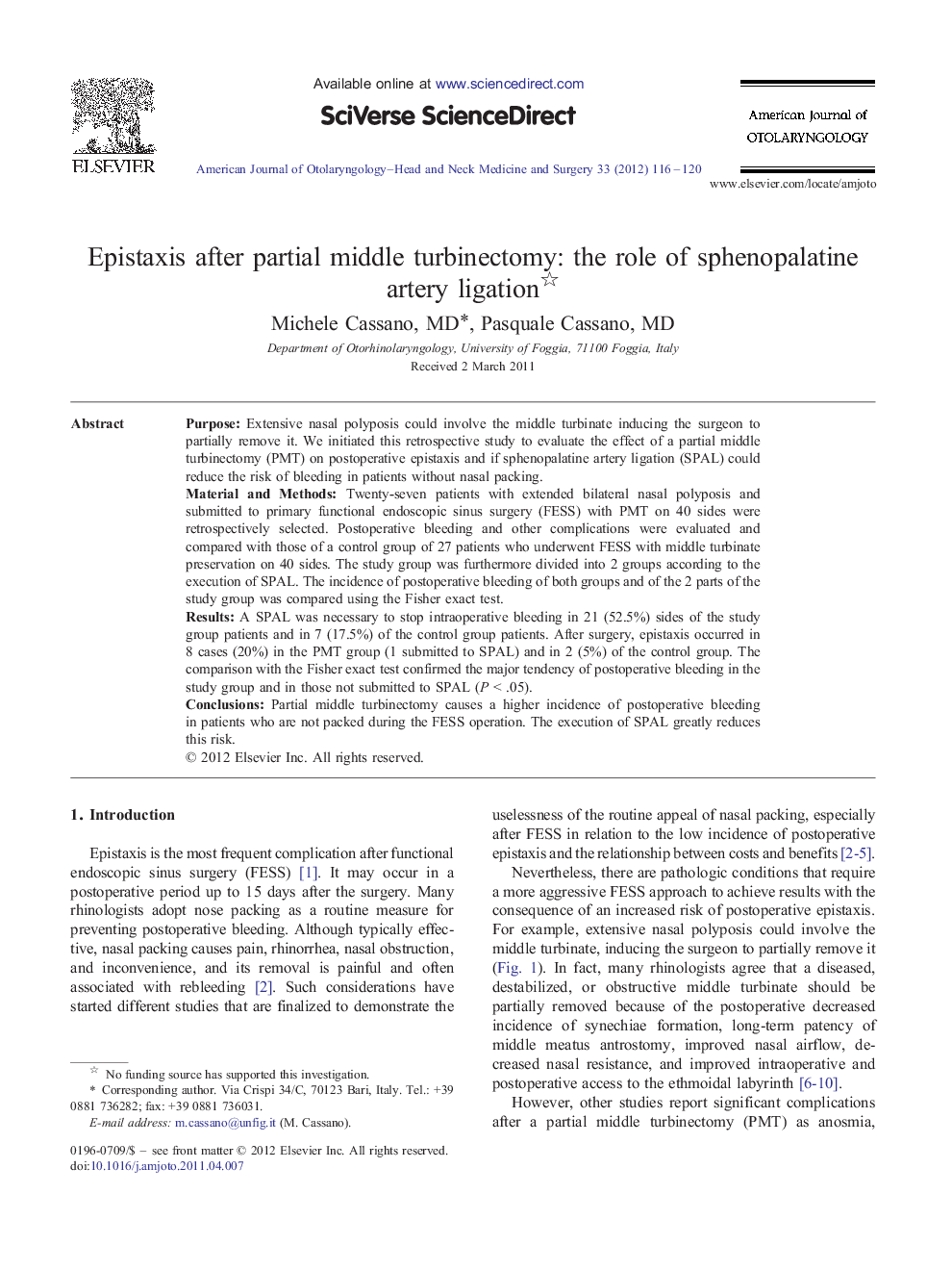| Article ID | Journal | Published Year | Pages | File Type |
|---|---|---|---|---|
| 4104026 | American Journal of Otolaryngology | 2012 | 5 Pages |
PurposeExtensive nasal polyposis could involve the middle turbinate inducing the surgeon to partially remove it. We initiated this retrospective study to evaluate the effect of a partial middle turbinectomy (PMT) on postoperative epistaxis and if sphenopalatine artery ligation (SPAL) could reduce the risk of bleeding in patients without nasal packing.Material and MethodsTwenty-seven patients with extended bilateral nasal polyposis and submitted to primary functional endoscopic sinus surgery (FESS) with PMT on 40 sides were retrospectively selected. Postoperative bleeding and other complications were evaluated and compared with those of a control group of 27 patients who underwent FESS with middle turbinate preservation on 40 sides. The study group was furthermore divided into 2 groups according to the execution of SPAL. The incidence of postoperative bleeding of both groups and of the 2 parts of the study group was compared using the Fisher exact test.ResultsA SPAL was necessary to stop intraoperative bleeding in 21 (52.5%) sides of the study group patients and in 7 (17.5%) of the control group patients. After surgery, epistaxis occurred in 8 cases (20%) in the PMT group (1 submitted to SPAL) and in 2 (5%) of the control group. The comparison with the Fisher exact test confirmed the major tendency of postoperative bleeding in the study group and in those not submitted to SPAL (P < .05).ConclusionsPartial middle turbinectomy causes a higher incidence of postoperative bleeding in patients who are not packed during the FESS operation. The execution of SPAL greatly reduces this risk.
